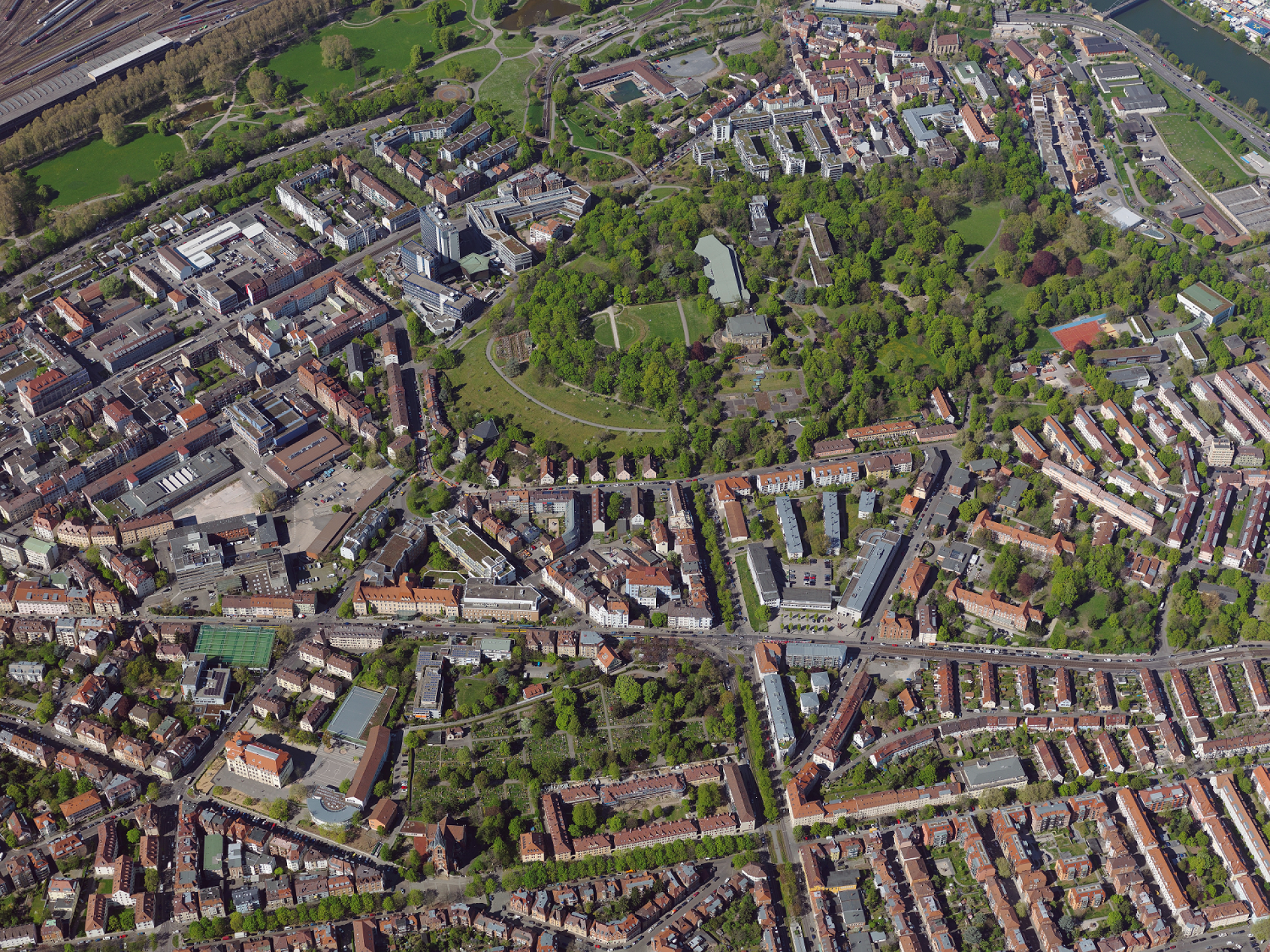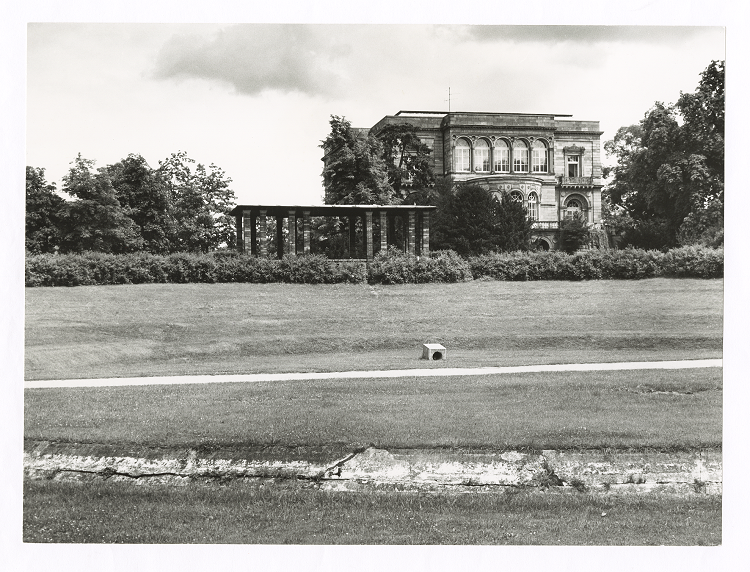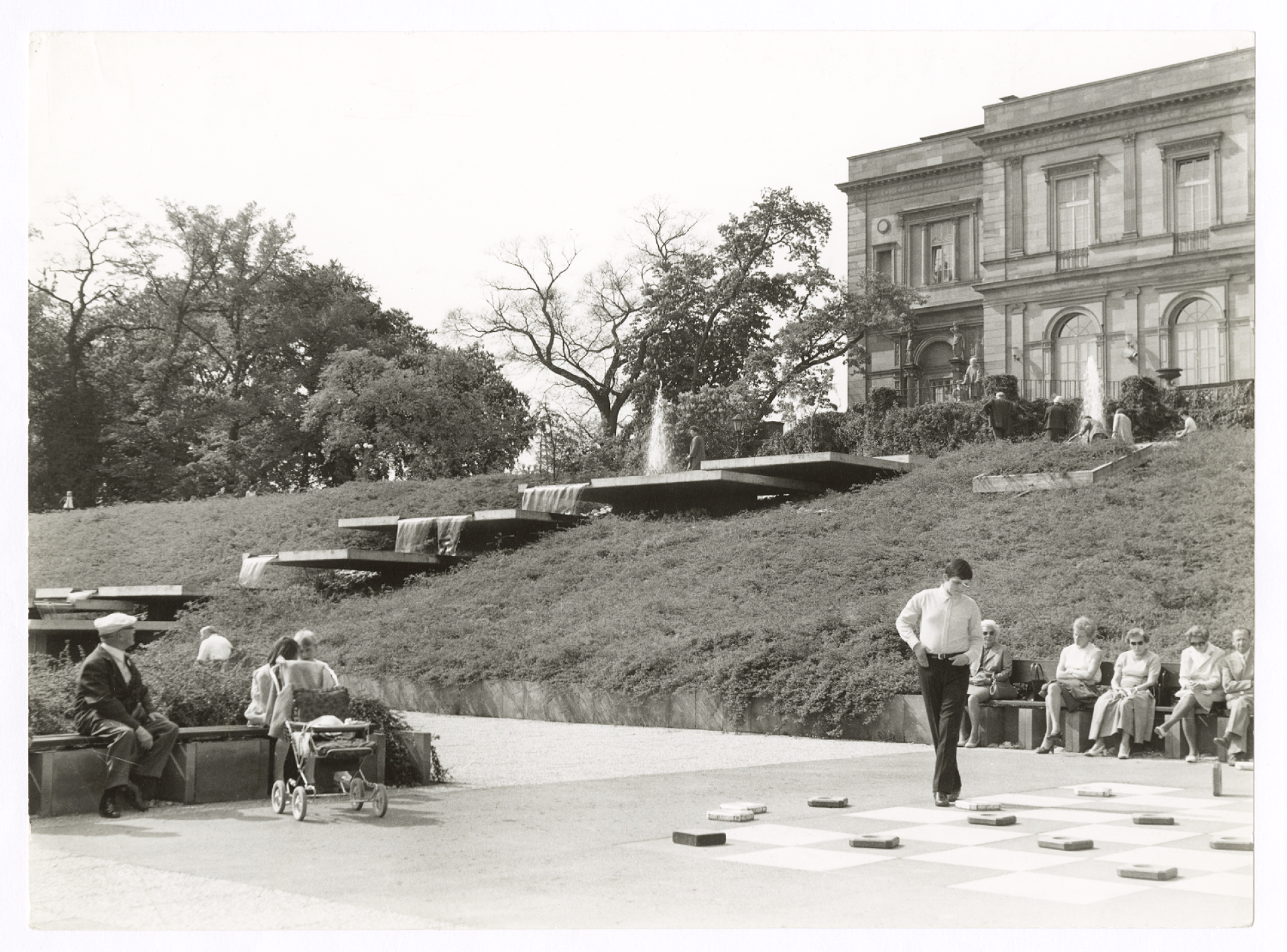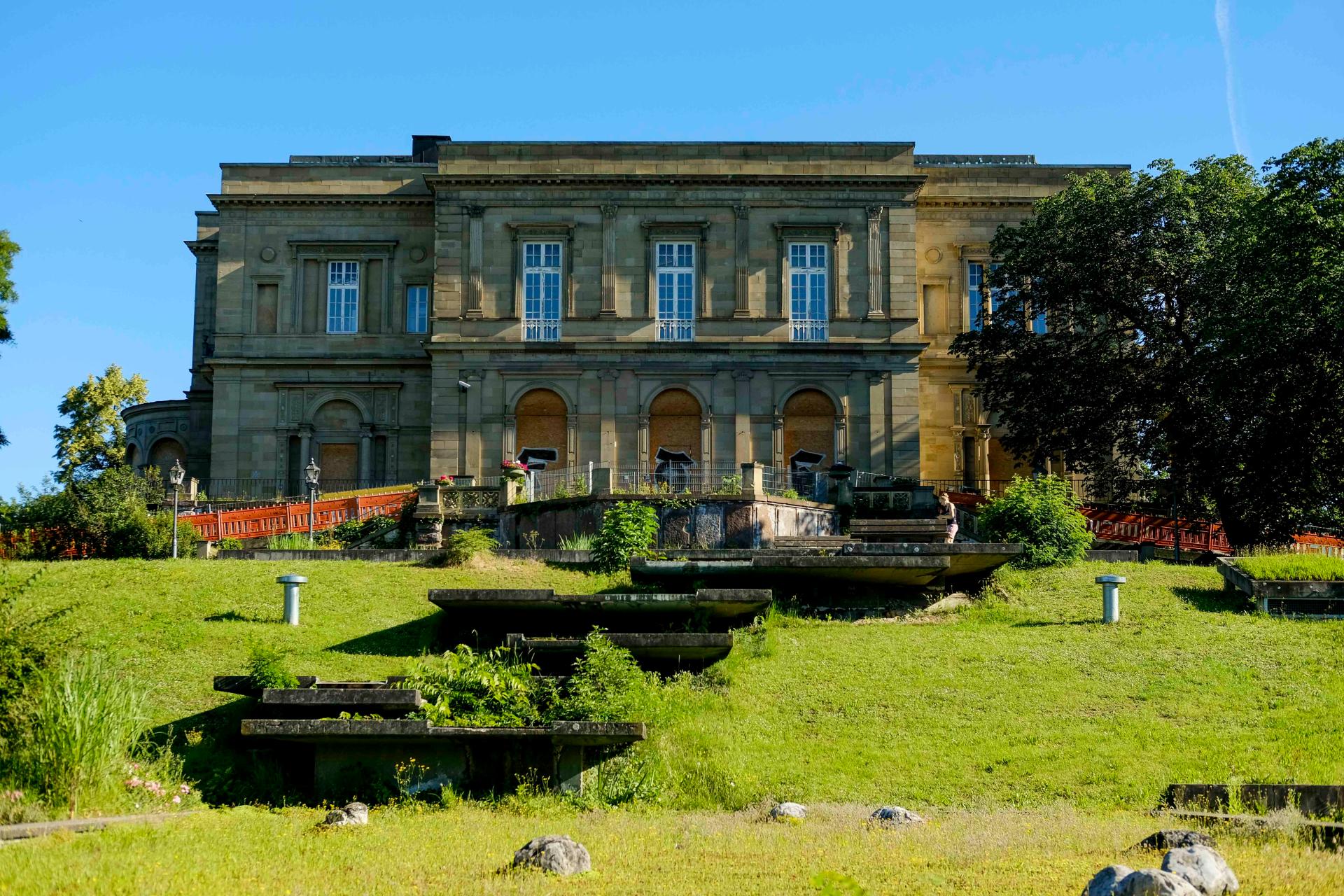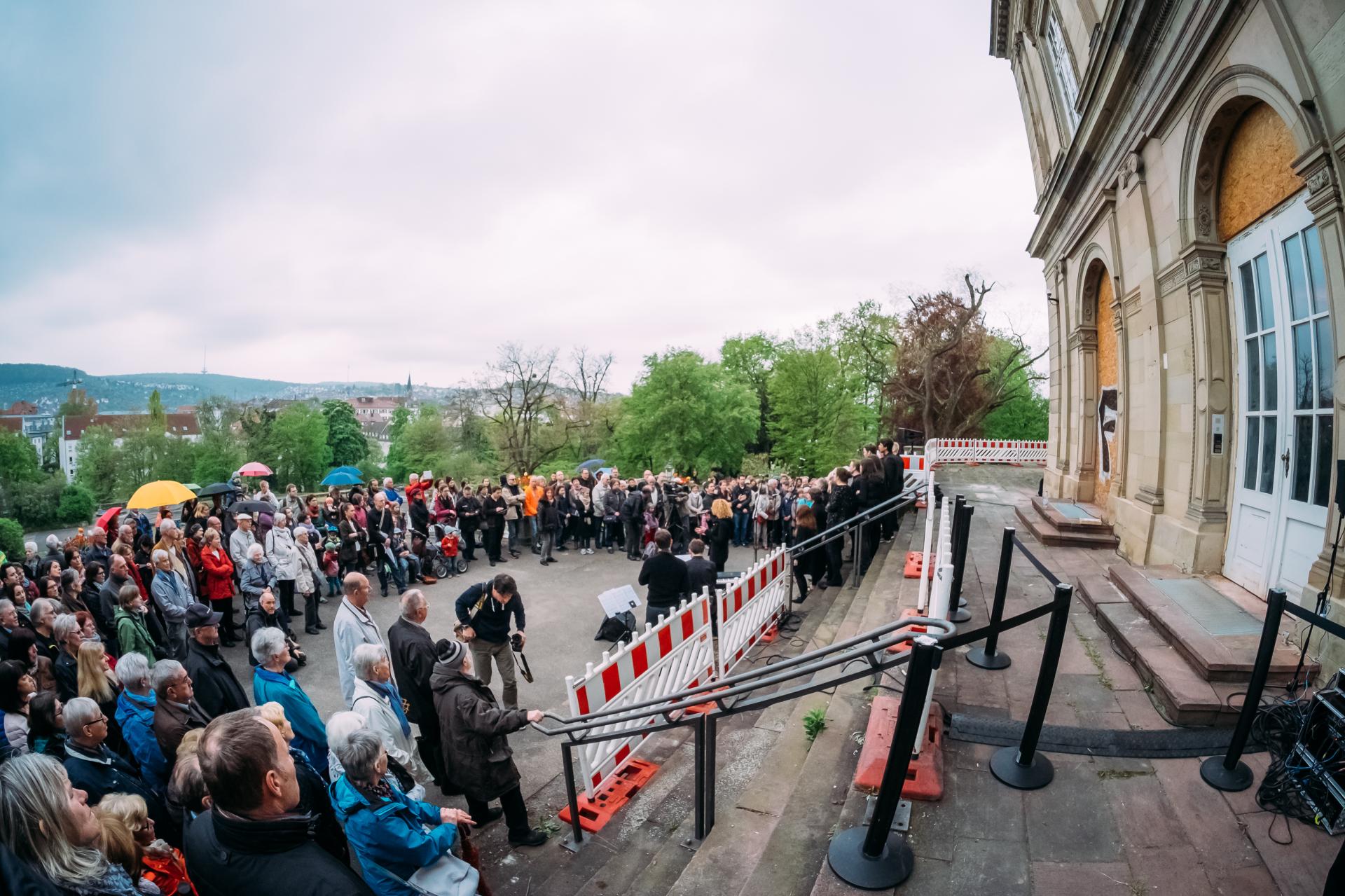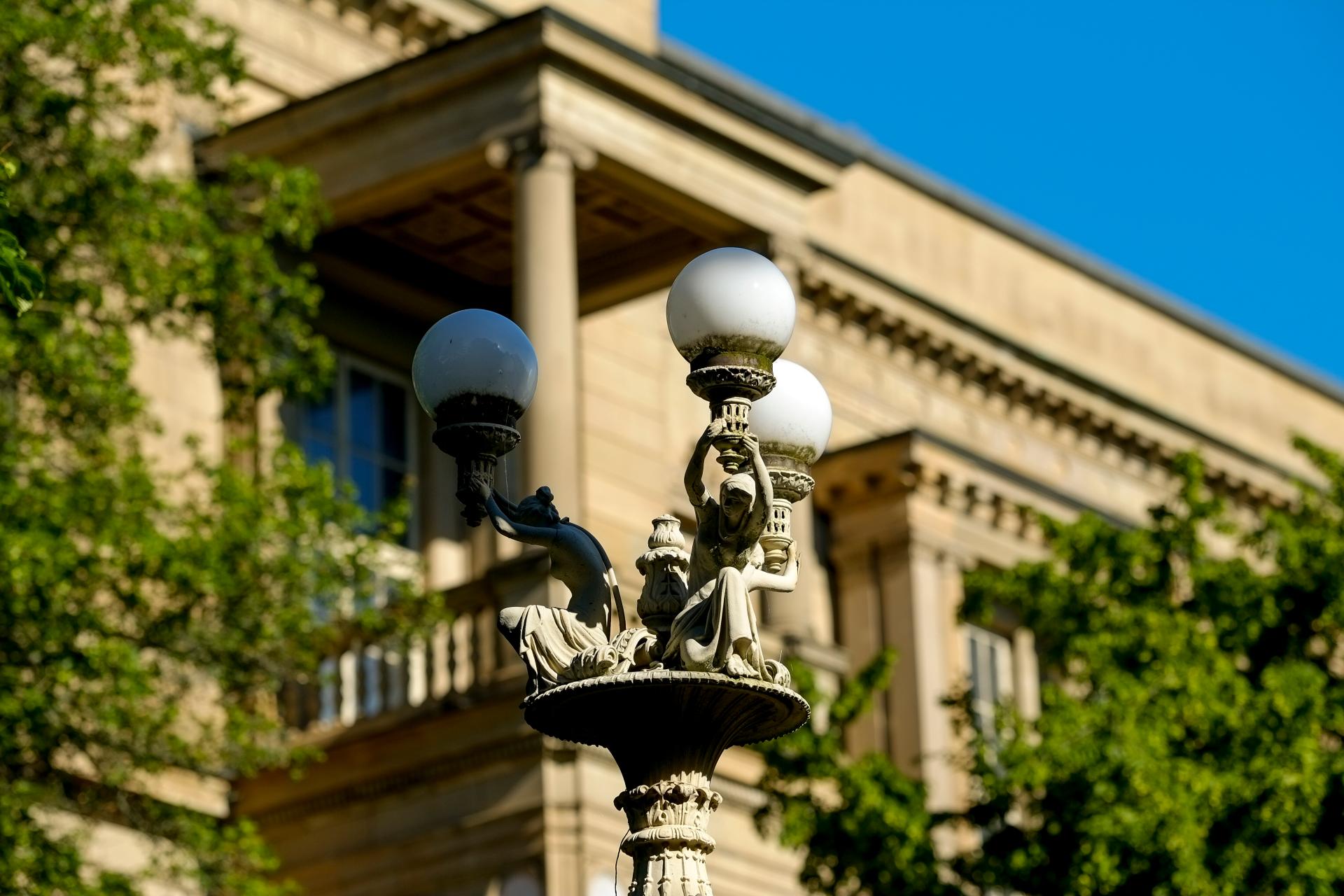Villa Berg: Living Monument & Open House
Basic information
Project Title
Full project title
Category
Project Description
Villa Berg – the historical monument is going to be renovated and a new wing added. A living monument, it will continue to be used as a cultural institution. A new concept ensures that the future “Open house for Music and More” will attract a much wider and much more diverse audience. The restored villa will come alive again in a new way. Additionally, the new building will be designed with all the latest requirements for use as a cultural venue in mind.
Project Region
EU Programme or fund
Description of the project
Summary
The Villa Berg in Stuttgart is a splendid villa that was planned in the neo-renaissance style by the architect Christian Friedrich von Leins. It was built for the Crown Prince Karl and his wife Olga von Württemberg between 1845 and 1853. The villa is a historical testimony and a listed monument at the same time. Hidden behind its walls of stone remain traces of the villas many former uses and of several different styles of architecture. First built as a lavish home, it was later used as a public place where festivals and concerts were held. Villa Berg forms an integral part of the district and the park that extends around the building. For this reason, the townspeople feel a special connection with the villa and its history. Following initiatives from citizens, the city of Stuttgart acquired the villa in 2015 and has since begun to develop it together with the people of Stuttgart into an “Open House for Music and More”. This includes the extensive renovation of the existing structure and the building of an extension.
The idea behind the “Open house for Music and More” is to transform and enhance the existing musical venue into a contemporary, low threshold location with a greater range of cultural offerings, which will in turn attract a wider audience.
Based on the understanding that both the villa and the surrounding park are regarded as public property and should therefore be used in a way that allows them to be open to all city residents, the planning process for this project is fashioned as a close cooperation between the project managers and town planners and the people. Public participation shall ensure that the whole renovation project follows common goals all the way.
At the end of the participation process, the restored and rejuvenated Villa Berg will not only be a living and lively monument but also an example for a successful union of architecture and culture.
Key objectives for sustainability
Sustainability is an integral part of the Villa Berg project. Conserving and repairing an identity-creating historic building in combination with the building of a new addition, preserves the past in a tangible manner and at the same time leads a way into the future. Moreover, next to these two very different architectural statements, the innovative cultural space will put a third and very self-confident stamp on the building.
The history of the house and its construction has been studied in depth and brought into focus how important natural materials, such as stone, are to the renovation process. The study led to a heightened consciousness of the technical workmanship involved and how regional and local materials were included in the structure. Light and dark natural sandstones, with some richly incorporated decor and sculptural elements, were used to build the villa.
The concept of sustainability is not only present in the plans for the renovation of the villa and in the construction of a new wing. Through the use as a cultural venue, the spirit of the house will also come alive again. The past gives the villa its unique identity. Many older citizens still have vivid memories of the Villa Berg in its heyday, when concerts or broadcasts took place there. As the villa re-establishes itself as an all-day socio-cultural institution for the people of Stuttgart it will hopefully also generate new fond memories.
The active participation of the citizenry in the project is therefore instrumental to achieve this kind of sustainability in the renovation as well as in the use of the building and ensures its wide acceptance.
Key objectives for aesthetics and quality
Villa and Park together as an ensemble exude a special quality, which the unique topographical location of the villa on the highest point in the park highlights. One strength of the redesign of the park is that it provides a better urban integration of the green space with the city centre and the Neckar valley. This underlines the importance of the park as a place of recreation and improves its role as a green link.
In 1951 the villa was transferred into the hands of South German Radio who used it as a venue and broadcast location for concerts and various entertainment programs. The villa´s role as a popular music house is key to the envisaged future use.
During its heyday as a musical venue, the destroyed interior of the villa was rebuilt to meet the requirements of the musicians and employees of the South German Radio. In 1950 – 51, rehearsal and vocal rooms were created, as well as control rooms and sound rooms for recordings. To this day, a large broadcasting hall, with a large concert organ integrated into the rear wall, occupies the heart of the building. The broadcasting hall was equipped with a large stage, acoustic and technical elements on the walls and ceilings and seating for up to 400 visitors. The design by the architects Eiermann and Mössinger almost completely encapsulates the interior of the villa without any relationship whatsoever to the exterior and the structure of the building. Round shapes and an elegant choice of colours and materials created a completely new architectural layer in a modern style within the historic building complex.
Both architectural layers, the neo-renaissance exterior with its richly decorated natural stone facade and the modern interior of the nineteen-fifties, can still be seen and appreciated today. However, it is precisely at these points where the architectural traces from different historical periods intersect that a fruitful discussion can be lead about the right for them to exist under the same roof.
Key objectives for inclusion
As the title “Open House for Music and More” already implies, cultural activities and experiences will form the basis of the future site. An ongoing participation process will help to establish a portfolio of various programmes and offers, making sure that the building will be used well and frequently, increasing a sense of connection, community and identity.
Over time, the villa and the broadcasting hall were used less and less, so that the South German Radio (Süddeutscher Rundfunk) sold the villa in 2007. The villa remained largely unused until it was acquired by the city of Stuttgart in 2015. The vacancy and the gradual neglect of the building have damaged the existing structure, so that repair measures have to take place before the gates can be opened for a new use.
The development of the “Open House for Music and More” consists of two parallel elements. On the one hand, the structural side of the project must be planned and executed. Additionally, a concept for the new usage of the building needs to be devised. Permanent socio-cultural offers should be established and diverse and attractive programmes for the citizens created.
The focus of the project lies in the idea of an “open” house, meaning that through participation as many people as possible have the opportunity to be involved either in the planning process or in drawing up a concept for the future use of the building. To support this notion, the architectural design of the building and the park shall also appear open and inviting, which is why a freely accessible courtyard is included in the plans.
Results in relation to category
Interest and commitment of individuals to what is happening in their city led to the forming of a community pursuing the same goal: the reactivation of a place and a cultural institution that will be developed by and for the citizens.
An open day shortly after the acquisition through the city offered visitors the opportunity to inspect the villa and its rooms. The long locked doors were thrown open to the citizens and they accepted the invitation thankfully. From near and far, curious visitors streamed into the building. This enthusiasm for the house and its history is enduring to this day and spilling over into the planning of the villa.
Poetry slam lecture, orchestral concert, sculpture workshop - anything is conceivable in the future “Open House for Music and More”. Participation in the concept and the program design is expressly desired and encouraged.
How Citizens benefit
The Villa Berg project was initiated following initiatives from local people, which is why they in particular will benefit from the process and realisation of the Villa Berg project. The Project is tailor-made for their needs and wishes.
The incentive to buy and develop arose from the civic initiative 'Occupy Villa Berg', which provided the crucial impetus through regular meetings and actions, which took place in the park of Villa Berg. Picnics, sport-events or readings in the park made the interests of the citizens visible.
The project Villa Berg snowballed from the combined efforts of a private civic participation platform and local stakeholders interested in the preservation and development of the monument into a large assignment for municipal politics, urban planning and cultural participants. Even before the actual structural implementation, the project already is a model example of how the efforts and continuous involvement of local people can transform an entire area, villa and park, into a cultural place with powerful radiance.
Additionally, the villa will provide low-threshold access to culture, which in particular meets the challenges of the heterogeneous population in Stuttgart´s Eastern suburb.
Innovative character
The Villa Berg and Park project improves the cultural infrastructure of the city of Stuttgart in an innovative way by creating a new platform as a starting point for various events and offers. The special characteristic of the project is expressed in the conscious decision by the city to purchase the villa in order to develop it together with the citizens of Stuttgart.
The future venue will stand out uniquely through its combination of high- and sub-cultural events, taking up and continuing the current use of the park for various cultural and leisure activities.

